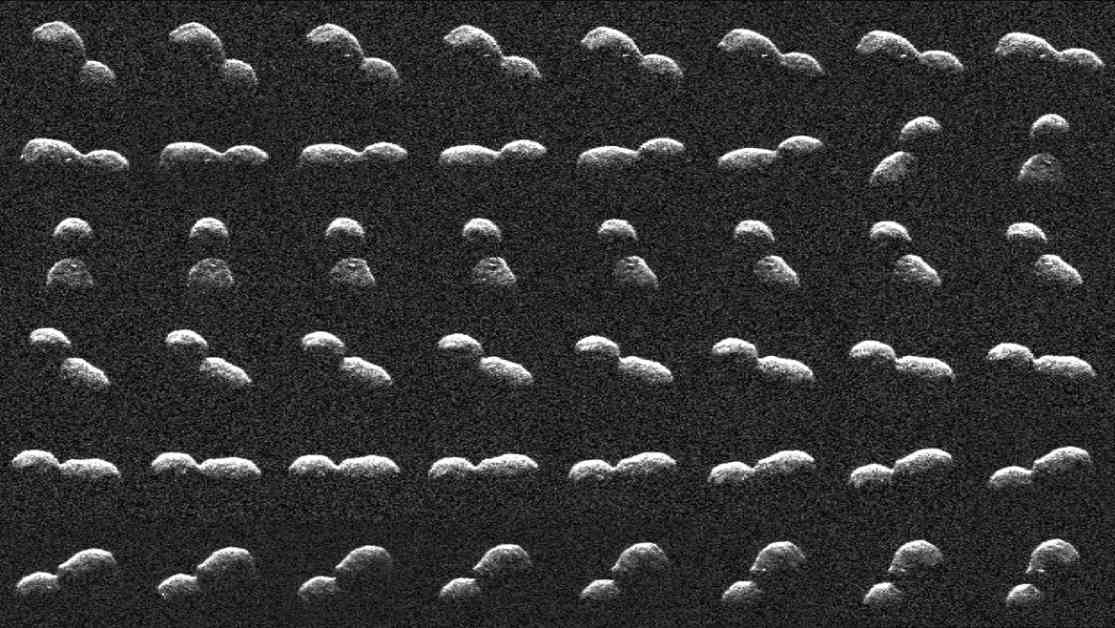Mysterious Peanut-shaped Object Detected Near Earth’s Radar
A fascinating discovery was made recently as a potentially hazardous near-Earth asteroid, named 2024 ON, passed by our planet at a distance of 620,000 miles. This celestial object, resembling a giant space peanut, caught the attention of scientists due to its unique shape and surface features. The asteroid’s close approach allowed for detailed radar images to be captured by NASA’s Goldstone Solar System Radar near Barstow, California, shedding light on its intriguing composition.
Close Encounter with 2024 ON
The asteroid 2024 ON was first detected by the Nasa-funded Asteroid Terrestrial-impact Last Alert System (ATLAS) in Hawaii on July 27. Its close approach to Earth on September 17 provided researchers with a prime opportunity to study this celestial visitor up close. Passing at a distance of 620,000 miles, which is about 2.6 times the distance between Earth and the Moon, the asteroid’s proximity allowed for high-resolution radar images to be obtained just a day before its closest approach.
Scientists were amazed to find that 2024 ON is a contact binary, meaning it consists of two rounded lobes connected by a narrow neck, with one lobe being approximately 50% larger than the other. This peanut-shaped asteroid measures about 1,150 feet (350 meters) in length, with radar images revealing surface features as small as 12.3 feet (3.75 meters). The presence of bright spots on the asteroid’s surface suggests the existence of large boulders, adding to the mystery and intrigue surrounding this celestial body.
Radar Observations and Scientific Insights
The radar observations conducted by NASA’s Goldstone Solar System Radar spanned about six hours, capturing approximately 90% of one complete rotation of the asteroid. This invaluable data provided scientists with a better understanding of 2024 ON’s structure and composition, allowing them to analyze its surface features in great detail. The high-resolution radar images obtained during this close approach have significantly enhanced our knowledge of this asteroid and its potential impact on Earth.
While 2024 ON is classified as potentially hazardous due to its size and proximity to Earth’s orbit, NASA officials have reassured the public that it poses no immediate threat to our planet. The detailed radar data collected during this encounter have enabled researchers to refine their understanding of the asteroid’s orbit and trajectory for the foreseeable future. This close encounter underscores the importance of planetary radar in studying near-Earth objects and improving our planetary defense capabilities.
In conclusion, the discovery of the mysterious peanut-shaped object near Earth’s radar has sparked excitement among scientists and space enthusiasts alike. The close approach of asteroid 2024 ON provided a rare opportunity to study this celestial visitor in detail, revealing its unique shape and surface features. The radar observations conducted by NASA’s Goldstone Solar System Radar have provided valuable insights into the composition and structure of this asteroid, furthering our understanding of near-Earth objects and planetary defense. As we continue to explore the mysteries of the cosmos, encounters like these serve as a reminder of the wonders that lie beyond our own planet.
